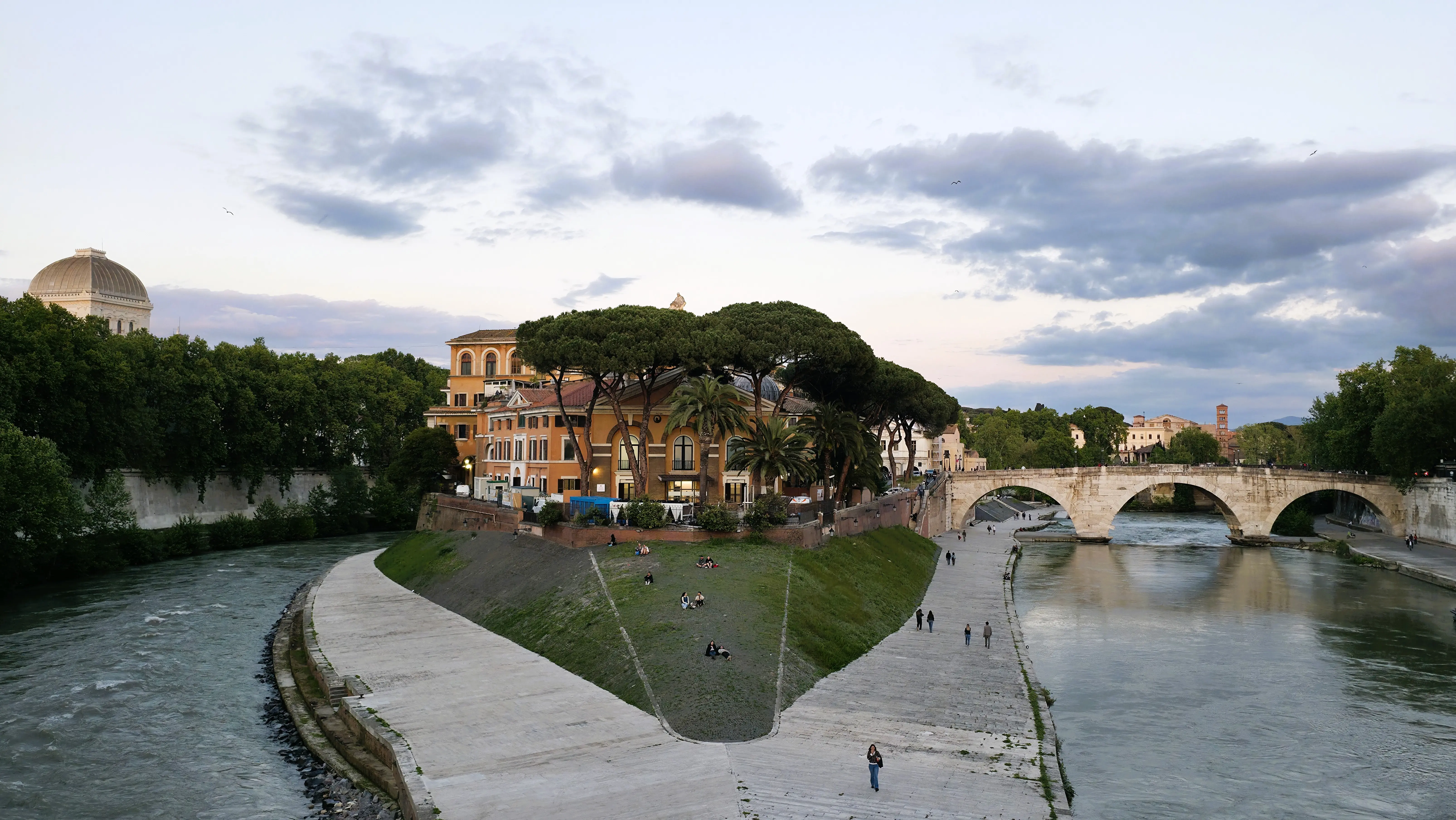Ciao fellow travellers! Floating gently between the banks of the Tiber River lies a tiny island steeped in legend and layered with history: Tiber Island (Isola Tiberina). Though often overlooked by hurried travelers rushing between Trastevere and the Jewish Ghetto, this quiet haven invites you to slow down, step back in time, and discover a side of Rome that whispers rather than shouts. This island isn’t just a footnote in Roman history, it’s a chapter all its own. From sacred mythology and ancient healing to riverside strolls and sunset cinema, Tiber Island offers a glimpse into the soul of Rome: resilient, poetic, and unexpectedly tranquil.
🏛️ A Sacred Past
According to Roman legend, Tiber Island was formed in the 6th century BCE when the belongings of the last king of Rome, Tarquinius Superbus, were thrown into the Tiber River after his expulsion. Some versions say it was his body, others his grain stores – but all agree this hated tyrant’s remains created the island. Over time, this morbid myth gave way to a more sacred purpose: healing.
In 293 BCE, a terrible plague struck Rome. Following advice from the Sibylline Books, Roman envoys traveled to Epidaurus in Greece to seek help from Asclepius, god of medicine. Upon returning, a sacred serpent – symbol of the deity – slithered off their ship and settled on the island. The Romans took this as a divine sign and dedicated the island to Asclepius, constructing a temple somewhere on the site (likely beneath today’s Basilica of St. Bartholomew on the Island).
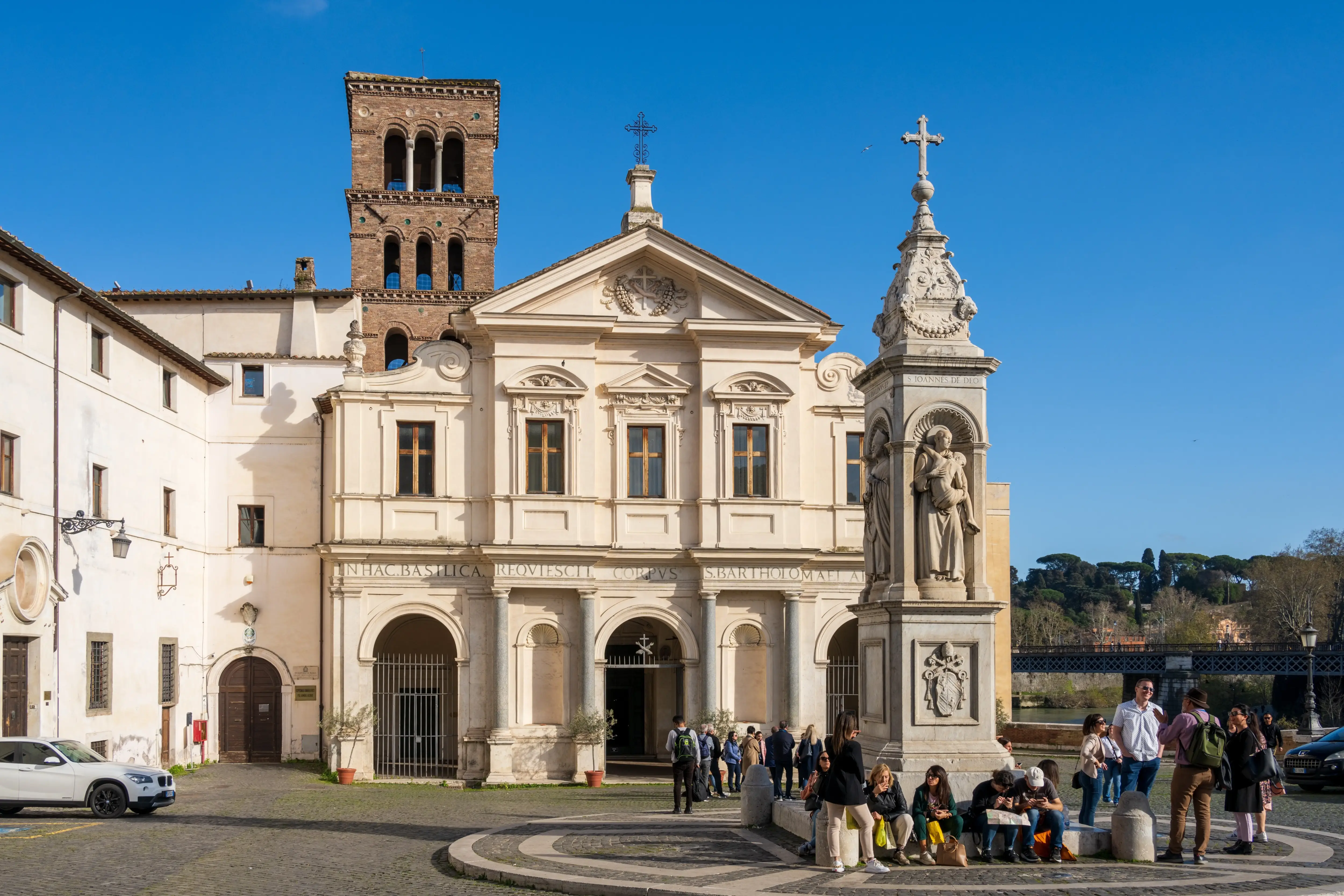
Today, the legacy lives on with the Fatebenefratelli Hospital, built in the late 16th century (1584) and still functioning, serving as a remarkable link between ancient and modern medicine, making Tiber Island a place of healing for over 2,000 years
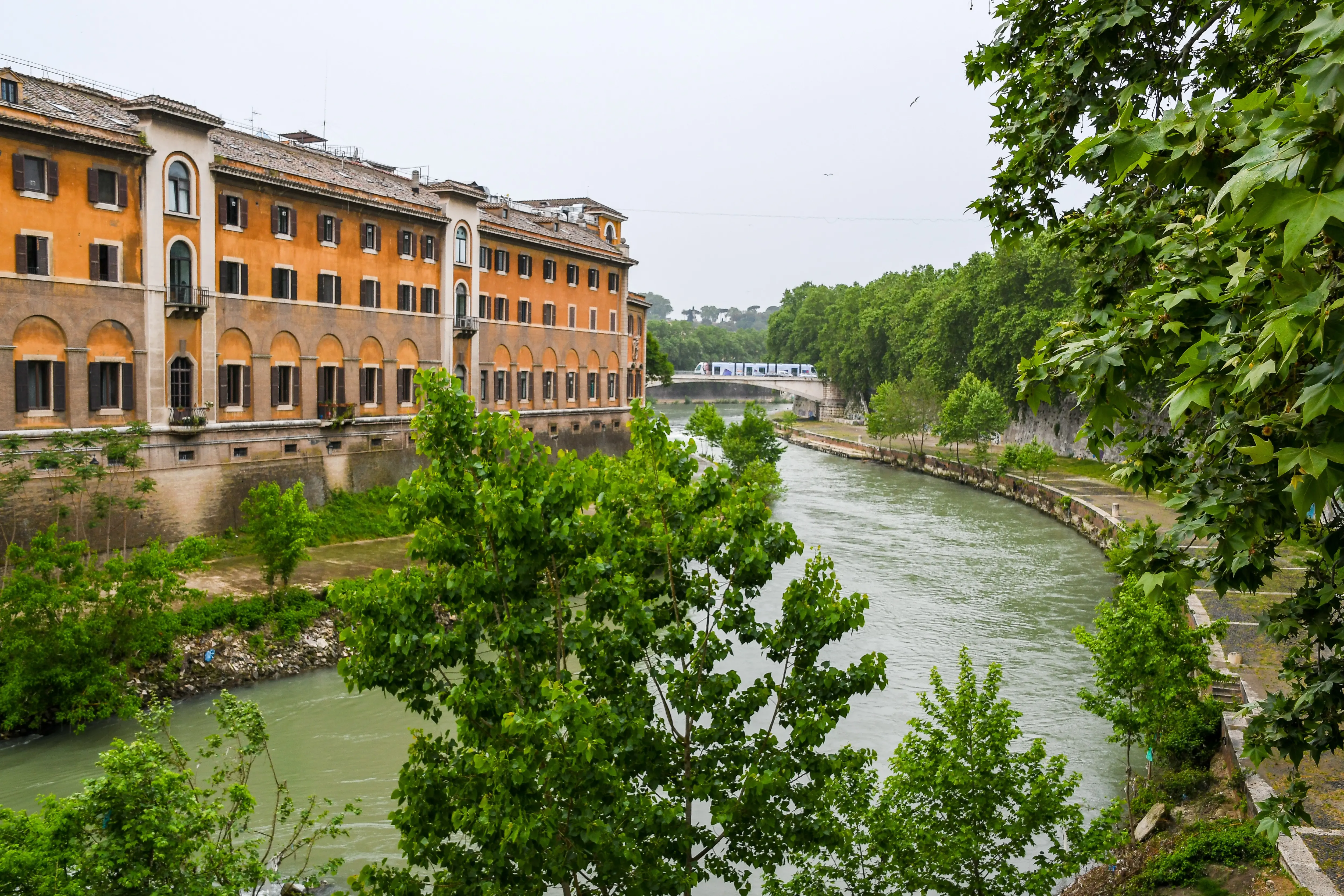
🌉 Crossroads of Culture
Tiber Island is connected to both sides of Rome by two of its oldest bridges:
- Ponte Fabricio (62 BCE): Rome’s oldest surviving bridge in its original form. It connects the island to the Jewish Ghetto and is affectionately known as the “Bridge of the Four Heads” thanks to a pair of double-faced herm statues at its entrance.
- Ponte Cestio: Reconstructed several times since antiquity, this bridge links the island to Trastevere, making it a perfect throughway between neighborhoods steeped in character.
As you stroll across, pause to admire the river from either side, the gentle curve of the Tiber frames the island in a peaceful embrace.
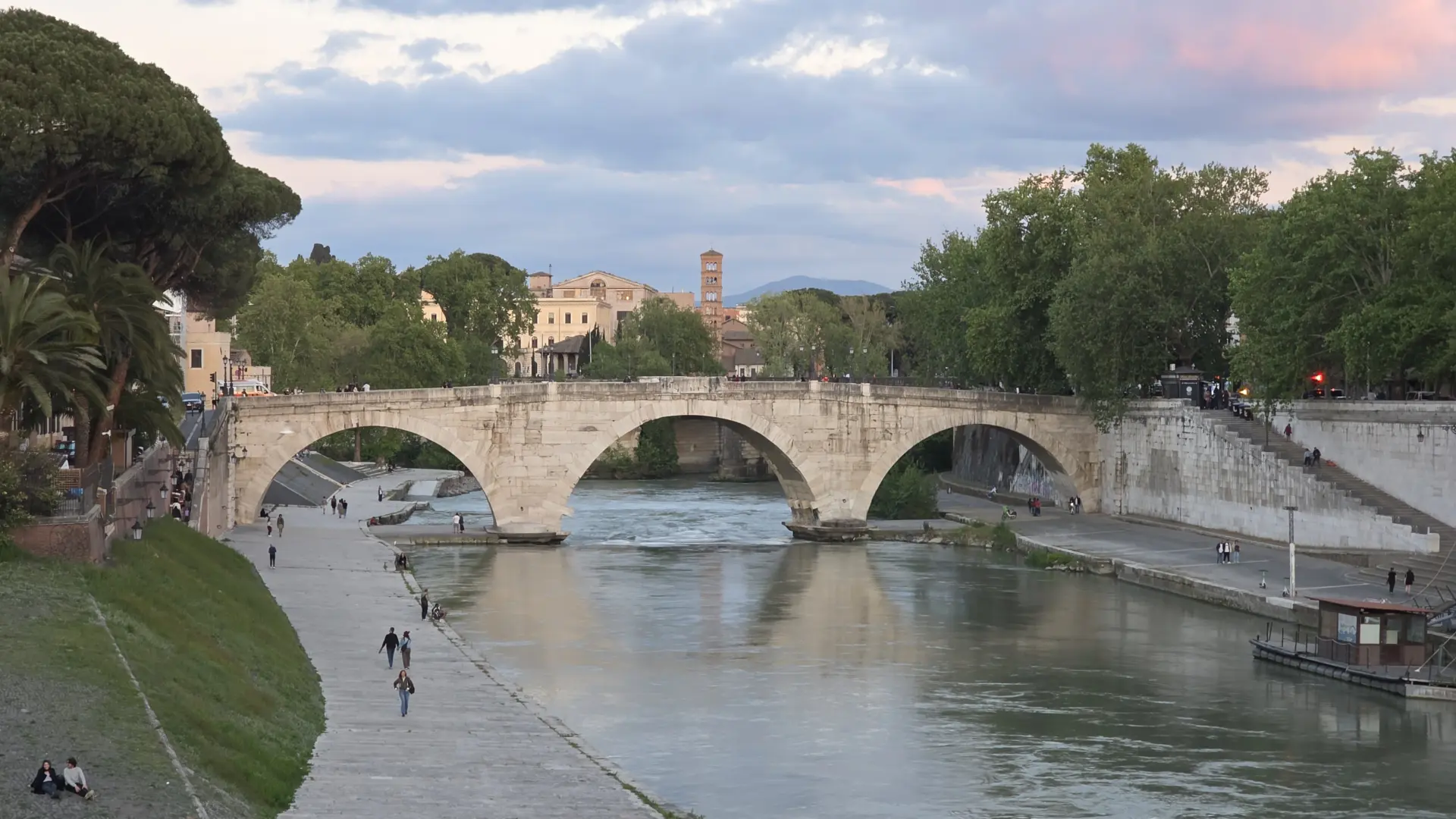
📸 Picture Perfect
Tiber Island is one of those places where the light always seems a little softer. Whether it’s the golden hour glinting off the river or the moody mist rising in the morning, it offers a chance to capture Rome’s contemplative side. Walk along the island’s narrow pathways for riverside views, peek through ivy-covered walls, or find a bench and just listen to the water.
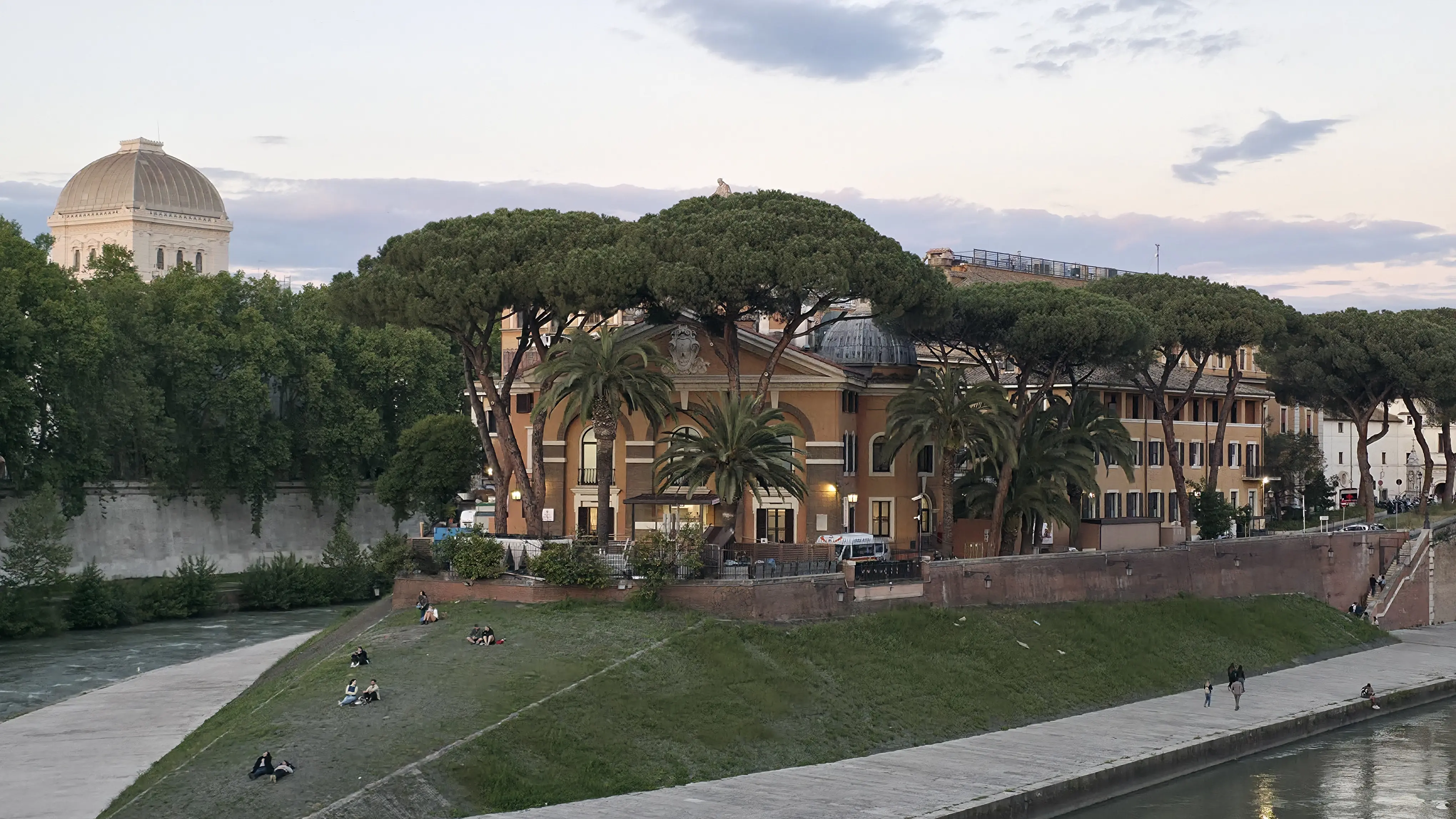
Come summer, it transforms. The Isola del Cinema film festival takes over the island with open-air screenings, food stalls, and a festive yet intimate vibe. Watching a movie under the stars here is a moment you’ll never forget.
📍 Practical Tips for Visiting Tiber Island
- How to Get There: Walk from Trastevere or the Jewish Ghetto via Ponte Cestio or Ponte Fabricio.
- Best Time to Visit: Early morning for peaceful reflection or evening for golden light and romantic river views.
- What to Bring: Comfortable shoes, a camera, and maybe a journal, it’s the kind of place that sparks introspection.
- Nearby Attractions: Jewish Ghetto, Trastevere, Piazza Santa Maria, and the Portico of Octavia.
Tiber Island deserves a spot on your Rome itinerary for its unique mix of myth, medicine, and modern calm. It’s a rare place that merges sacred stories, civic life, and serene natural beauty. For travelers who want to see more than monuments – who crave meaning, beauty, and a moment to breathe – this is your place!
Final Reflections
Tiber Island may be small in size, but it’s mighty in spirit. It’s the kind of place where you don’t just see Rome, you feel it. In the rustle of leaves by the basilica, the echo of footsteps across Ponte Fabricio, and the warm scent of coffee drifting from a quiet café, you’re reminded that Rome’s heart beats in more than its monuments.
For us bubbly travelers, it’s a place to reconnect, not just with the city, but with ourselves. It reminds us that beauty doesn’t always need grandeur. Sometimes, it floats gently, like an island, waiting to be found.
xoxo,
Bubbly💫

